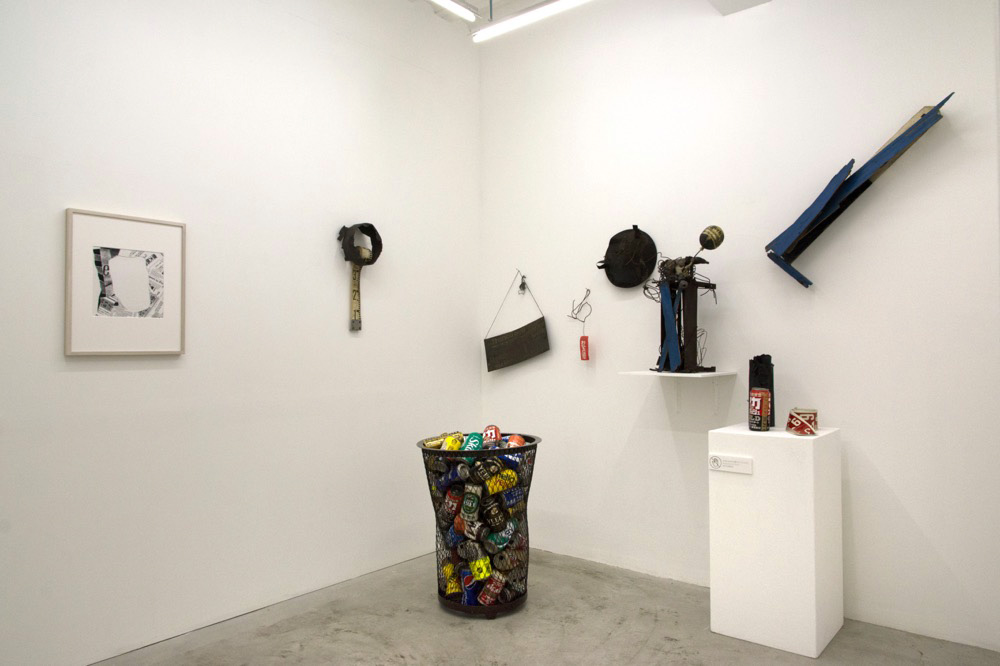
50×70.5cm, Etching, 1981

50x70cm, Etching, 1981

55x55x80cm, Ceramic/iron, 2016

102x49x37cm, Ceramic, 1982





Dates|October 7 – November 5, 2017
Venue|MEM map
Open hours|12:00-20:00 Closed on Mondays [Tue. if the Mon. is a public holiday]
Tel|+81 (0)3-6459-3205
Artist Talk|October 7, 18:00〜 at MEM (Japanese version only)
*Opening reception will be held after the talk.
Born in 1932 in Osaka. Mishima began painting in the 1950s. As she developed her own style, Mishima gradually began using newspapers and magazines to collage on top of painting. Shigeji Mishima (1920-1985), a painter and her husband, encouraged her to explore further with different techniques. Shigeji studied under Jiro Yoshihara, the leader of Gutai Group, although he didn’t join the group himself. At the beginning of the 1970s, Mishima made a first group of ceramic sculptures of everyday items including newspaper. Minami Garo, a leading contemporary art gallery in Tokyo, hosted Mishima’s solo show in Tokyo in 1974 showing such ceramic sculptures.
Ceramic sculptures of everyday items and waste material became Mishima’s trademark, while always experimented with new techniques and materials such as volcano ash, fibre-reinforced plastic (FRP) and polyester. For example, she was fascinated by making waste sculptures from Molten slag—a recycled glass-like material made by heating industrial waste to over 1300℃.
The two paintings on display with modified images of Venus that date from 1966, are good examples of her technique from the period when she used daily ephemera, such as newspapers and printed flyers, on top of canvas and panel. Here, Mishima used the female icon in art history as a shadow. She mentions her dislike for femininity being a female artist in a very male-dominated Japanese art world, along with being the daughter of a cabaret owner in Osaka’s Juso area.
The fragments of large French and German ceramic newspapers are from the early 1980s. She used to have these large newspaper sculptures in the garden of her studio in Toki City. Enlarging these everyday items is one important aspect of Mishima’s work, emphasizing an accelerated growth of waste and an overflow of information.
During this period, she photographed stacks of newspaper and produced a series of etchings entitled ‘Memory’. Related photographs taken before these etchings were made are also exhibited.
A group of sculptures in a small room were made in the mid 1980s right after returning from New York, where she stayed for roughly one year as part of the Asian Cultural Council’s fellowship. There, Mishima socialized with American contemporary artists such as Loy Lichtenstein and Louise Nevelson. These sculptures are made from objects and waste material she found on street.
The exhibition showcases the development of Mishima’s artistic practice spanning fifty years from the 1960s onwards, shifting from two-dimensional to three-dimensional work, passionately mastering the different techniques she took an interest in.
She also has a solo exhibition being held at Art Factory Jonanjima, containing a group of large-scale installations.
Mishima’s work is in the permanent collection of important institutions and museums around the world, including National Museum of Modern Art in Kyoto, Tokyo Metropolitan Museum of Contemporary Art, Minneapolis Institute of Arts in Everson, Museum of Arts in New York, Samuel P. Harn Museum of Art in Florida, Smith College in Massachusetts, Musée Cernuschi in Paris, Musée Ariana in Geneva, The Korean Culture & Arts Foundation in Seoul, M+ in Hong Kong, and ARTER | Vebi Koç Foundation in Istanbul.






 On Mono, Koto, and Kotoba – Eight Perspectives
On Mono, Koto, and Kotoba – Eight Perspectives  Kimiyo Mishima | Papier Collé
Kimiyo Mishima | Papier Collé  On Mono, Koto and Body – Six Perspectives
On Mono, Koto and Body – Six Perspectives  Kimiyo Mishima
Kimiyo Mishima  Two Person Show with Shigeji Mishima and Kimiyo Mishima
Two Person Show with Shigeji Mishima and Kimiyo Mishima